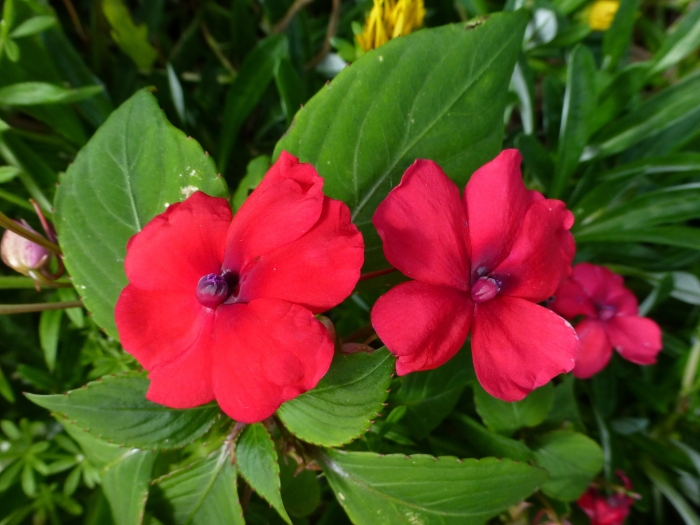Busy Lizzie
(Impatiens walleriana)
Busy Lizzie (Impatiens walleriana)
/
/

Murray NZ
CC BY 4.0
Image By:
Murray NZ
Recorded By:
Copyright:
CC BY 4.0
Copyright Notice:
Photo by: Murray NZ | License Type: CC BY 4.0 | License URL: http://creativecommons.org/licenses/by/4.0/ | Rights Holder: Murray NZ | Publisher: iNaturalist | Date Created: 2016-11-04T14:49:29-07:00 |





















































Estimated Native Range
Summary
Impatiens walleriana, commonly known as Busy Lizzie, is an annual or perennial herb that is evergreen in frost-free climates. It is native to the understory of forests and scrublands in Eastern and Southern Africa, where it thrives in the dappled light and moist soil conditions. Busy Lizzie typically grows to a height of 15–60 cm (6–24 in) with a similar spread, featuring broad lanceolate leaves that are 3–12 cm long and 2–5 cm broad. The plant is known for its hermaphroditic, zygomorphic flowers that are profusely borne and highly ornamental, measuring 2–5 cm in diameter with five petals and a distinctive 1 cm spur. The flowers come in a variety of colors, including pink, red, mauve, and white, and bloom from early summer to the first frost, providing a long season of color. The seedpods exhibit an explosive dehiscence mechanism for seed dispersal, a characteristic of the Impatiens genus.
Busy Lizzie is valued for its continuous flowering and ability to brighten up shady areas in gardens. It is widely used in parks and gardens for mass bedding, container planting, and as a ground cover due to its dense, bushy growth habit. It is also favored for its ease of maintenance and propagation by seed or stem cuttings, which root easily in water. In cultivation, Busy Lizzie prefers part shade to full shade, consistent moisture, and well-drained soils with good organic content. While it is generally pest-free, it can be susceptible to downy mildew, which has led to the development of resistant cultivars. Gardeners should be aware of its potential invasiveness in certain regions, such as the Caribbean, and take precautions to prevent its spread outside of cultivated areas.CC BY-SA 4.0
Busy Lizzie is valued for its continuous flowering and ability to brighten up shady areas in gardens. It is widely used in parks and gardens for mass bedding, container planting, and as a ground cover due to its dense, bushy growth habit. It is also favored for its ease of maintenance and propagation by seed or stem cuttings, which root easily in water. In cultivation, Busy Lizzie prefers part shade to full shade, consistent moisture, and well-drained soils with good organic content. While it is generally pest-free, it can be susceptible to downy mildew, which has led to the development of resistant cultivars. Gardeners should be aware of its potential invasiveness in certain regions, such as the Caribbean, and take precautions to prevent its spread outside of cultivated areas.CC BY-SA 4.0
Plant Description
- Plant Type: Herb
- Height: 0.5-2 feet
- Width: 0.5-2 feet
- Growth Rate: Moderate
- Flower Color: Pink, Purple, Red, White
- Flowering Season: Summer, Fall
- Leaf Retention:
Growth Requirements
- Sun: Part Shade, Full Shade
- Water: Medium
- Drainage: Medium
Common Uses
Bird Garden, Border Plant, Butterfly Garden, Fragrant, Groundcover, Hummingbird Garden, Low Maintenance, Potted Plant, Showy Flowers
Natural Habitat
Native to the understory of forests and scrublands in Eastern and Southern Africa
Other Names
Common Names: Buzzy Lizzie, Balsam, Sultana, Impatiens, Patient-Lucy, Sultana, Zanzibar Balsam, Patienceplant, Busy-Lizzy, Busy Lizzy
Scientific Names: , Impatiens walleriana, Impatiens wallerana, Impatiens sultanii, Impatiens petersiana, Impatiens holstii, Impatiens episcopi, Impatiens lujae, Impatiens lujai,
GBIF Accepted Name: Impatiens walleriana Hook.fil.